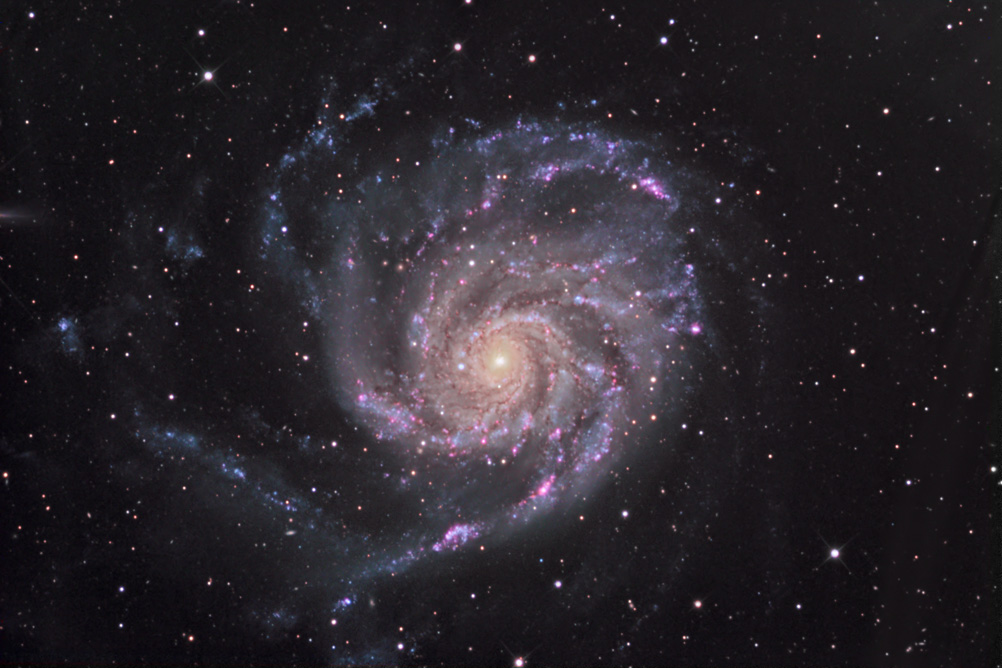

M101 is one of the more striking spiral galaxies (like our galaxy, the Milky Way) in the northern sky;
It is a grand design spiral galaxy, with about one trillion stars (twice as many as our Milky Way is thought to have).
It has a diameter of approximately 170,000 light years, making it a relatively large galaxy (our Milky Way now is thought to be a bit larger than that, perhaps 200,000 light years across).
The field is about the angular size of a full moon.
Its relatively close distance of about 22 million light years allows it to be studied in some detail. It is located in Ursa Major (of which the Big Dipper is a part), near the tip of the handle of the
Big Dipper. Recent evidence indicates that a close gravitational interaction with a neighboring galaxy created waves of high mass and condensed gas which continue to circle the galaxy. These waves
compress existing gas and cause star formation. One result is that M101 has several extremely bright star-forming regions (called HII regions) spread across its spiral arms (which appear as pinkish
blobs in the picture). M101 is so large that its immense gravity distorts smaller nearby galaxies.
Copyright 2007 Mark de Regt